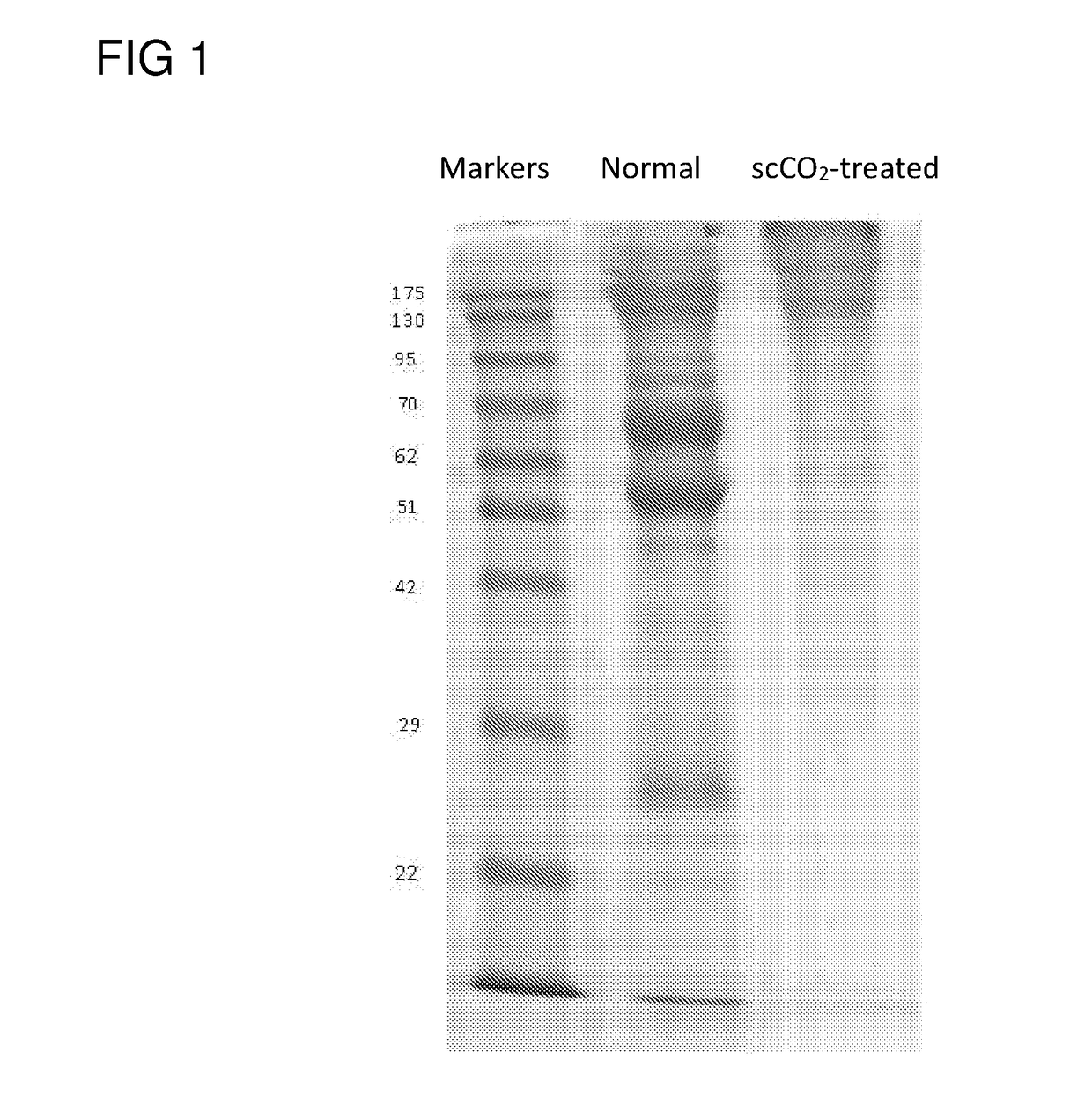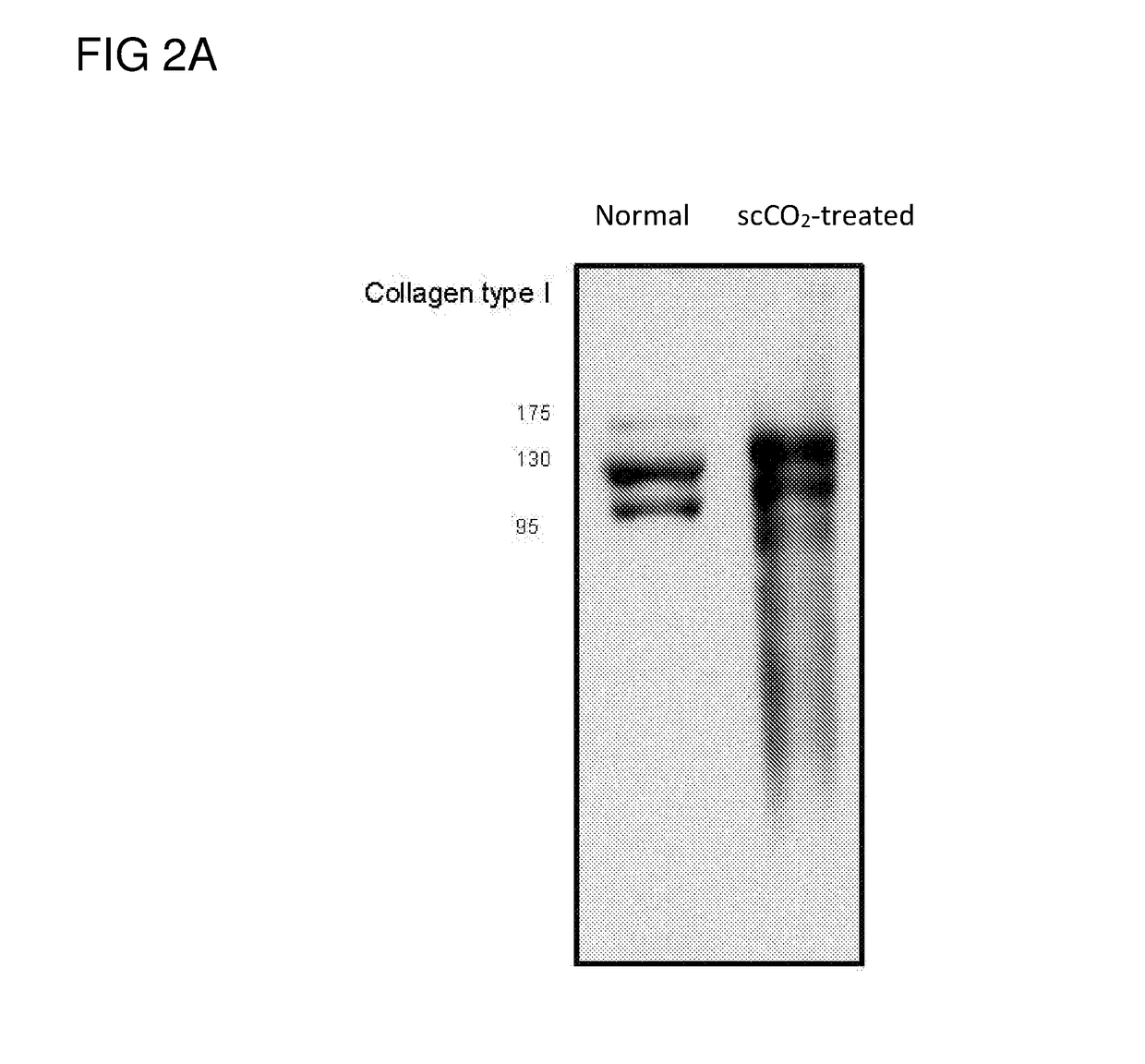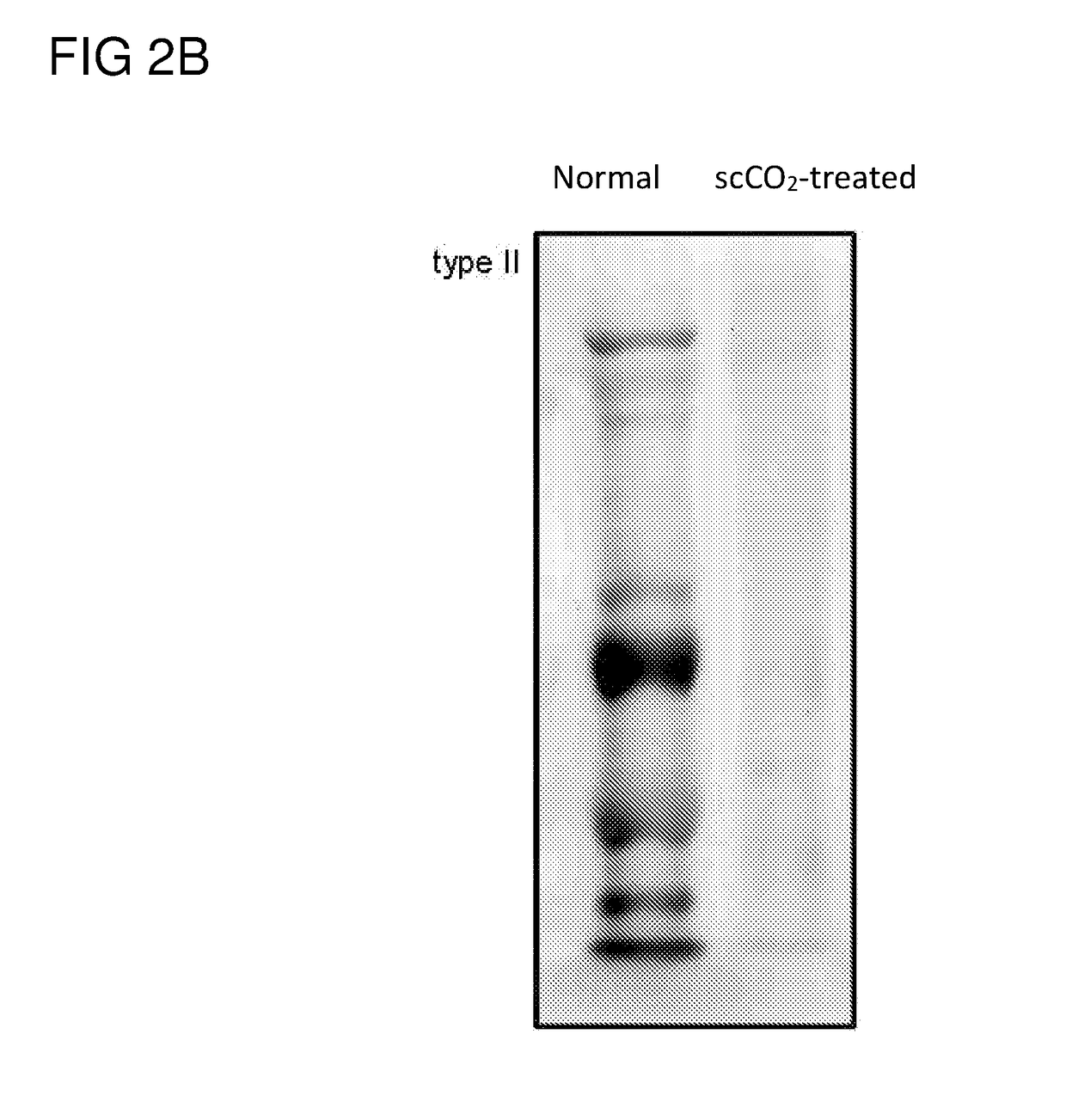Acellular corneas, methods of producing the same and uses thereof
a corneal cell and corneal technology, applied in the field of acellular corneas, can solve the problems of corneal xenografts causing severe immune responses (or transplant rejection) in the recipient host, and achieve the effects of reducing the risk of infection
- Summary
- Abstract
- Description
- Claims
- Application Information
AI Technical Summary
Benefits of technology
Problems solved by technology
Method used
Image
Examples
example 1
Preparation and Characterization of Acellular Porcine Cornea
1.1 Preparation of Acellular Porcine Cornea
[0055]The frozen nucleated porcine eye stored at −20° C. was thawed at room temperature for less than 3 min before being clamped and held in place by a tissue holder. The cornea and a portion of sclera were removed from the eye by use of a trephine (18 mm). Immersed the removed cornea in a container (7 cm×5 cm×4 cm) containing 1.5M NaCl or water only (i.e., without the addition of any salt, chelating agent or protease). The entired container was then subject to gentle shaking at room temperature at a speed of 100 rpm for 24 hrs, which removed the epithelium layer (about 50 μm). At this stage, the NaCl or water treated cornea appeared to be swollen and opaque (i.e., non-transparent).
[0056]The NaCl or water treated cornea was then placed on a tissue holder, which was then inserted into a vessel of a ScCO2 system (Helix SFE Version R3U, Applied Separations Inc (Allentown, Pa., USA)), ...
example 2
Re-growth of Human Adipose Cells (hADCs) on the Acellular Porcine Cornea of Example 1.2
2.1 Isolation of hADCs
[0064]Human adipose cells (hADCs) were isolated from fat tissues taken from patients underent liposuction surgery. Briefly, about 50 g fat tissue was rinsed with surplus amounts of phosphate-buffered saline (PBS) to remove any residual red blood cells. The thoroughly rinsed fat tissue was then suspended in PBS and subjected to centrifugation, and the upper layer was collected. Repeated the centrifugation once, and collected the upper layer, then evenly divided the collected upper layer into several portions. Each portion of the fat tissue was then transferred to another clear test tube containing 40 mL Dulbecco's Modified Eagle Medium (DMEM), which contained collagenase (1 mg / mL), N-acetyl-cysteine (NAC) (2 mM), and L-ascorbic acid 2-phosphate (0.2 mM). The test tubes were cultured at 37° C. overnight, then respectively subjected to centrifugation to remove the collagenase co...
example 3
Use of Acellular Porcine Cornea of Example 1.2 in a Corneal Xenograft Transplantation Model
[0067]The effect of acellular porcine cornea of example 1,2 in repairing eye conditions that required a transplantation was evaluated in a corneal xenograft transplantation model.
[0068]For this purpose, the animals used were New Zealand White rabbits (Livestock Research Institute, Council of Agriculture, Executive Yuan), and are maintained in rigid accordance to relevant guidelines on the use of animals in research. One eye is randomly assigned to receive the corneal graft. Rabbits weighing between 2.0 and 3.0 kg are anesthetized by intramuscular injection of 0.5-0.7 mL / kg rodent cocktail (100 mg / mL ketamine, 20 mg / mL xylazine, and 10 mg / mL acepromazine). Topical anesthetic drops of proparacaine hydrochloride (0.5% Ophthaine, Bristol-Myers Squibb) are instilled into the animal's eye together with drops of cyclopentolate (1%, Cyclogyl®, Alcon, Ft. Worth, Tex.) and phenylephrine (10.0% CibaVisio...
PUM
| Property | Measurement | Unit |
|---|---|---|
| temperature | aaaaa | aaaaa |
| pressure | aaaaa | aaaaa |
| temperature | aaaaa | aaaaa |
Abstract
Description
Claims
Application Information
 Login to View More
Login to View More - R&D
- Intellectual Property
- Life Sciences
- Materials
- Tech Scout
- Unparalleled Data Quality
- Higher Quality Content
- 60% Fewer Hallucinations
Browse by: Latest US Patents, China's latest patents, Technical Efficacy Thesaurus, Application Domain, Technology Topic, Popular Technical Reports.
© 2025 PatSnap. All rights reserved.Legal|Privacy policy|Modern Slavery Act Transparency Statement|Sitemap|About US| Contact US: help@patsnap.com



